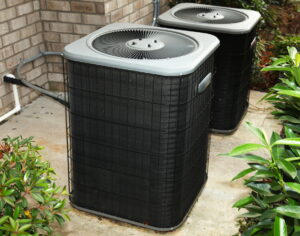
Close your eyes and imagine your air conditioner. (Obviously do this after you read this blog post, since it’s hard to close your eyes and read at the same time) Picture the system working at peak performance in your head. How does it actually cool the air in your home? What’s going on inside that mysterious outdoor cabinet that’s keeping your home comfortable?
No it’s not using ice, and no, it’s not just blowing in air like a fan. It’s completely a very complex process where it uses a specific type of refrigerant to draw heat from your home and disperse it outdoors. This specific process is what we call “the cooling process” and it’s the most important aspect of your AC.
If you’re in need of help with your AC, from AC maintenance in Lake Bluff, IL, to AC repairs, then you’re going to need a baseline level of understanding about how your system’s refrigerant works.
How Refrigerant Cools Your Home
When your air conditioner cools your home, it’s working on the principles of condensation and evaporation. Let us explain.
When refrigerant evaporates at high pressure, it draws in heat from the atmosphere around it. This is done indoors so the heat inside your home gets absorbed by the refrigerant and then travels through the refrigerant lines to the outdoor cabinet of your system. Then, when that same refrigerant condenses at the condenser coil, it releases the heat into the atmosphere as it turns into a liquid.
The cycle then repeats itself until the temperature inside your home meets the temperature reading listed on the thermostat and—Voila! Your home is cool and comfortable!
The Main Types of Refrigerant
Now we need to get into the weeds of things. Since about 10 years ago, refrigerant was always in a certain form called “Freon.” Freon, or as we call it today R-22, is a hydrofluorocarbon that’s well known for being used in all sorts of air conditioning devices since AC systems were invented. While it worked, it didn’t work as well as we wished.
For starters, R-22 is an ozone depleting chemical and it’s actively contributing to the emission of greenhouse gases and climate change. Thus, R-410A, or Puron, was invented!
R-410A is a refrigerant that functions similarly to R-22 except for the fact that it’s much less toxic for the environment while doing the same job. Because of R-410A exceeding expectations, global governments around the world including our own decided to phase out R-22 in 2020, essentially stopping companies from producing it.
As R-22 gets more and more rare, it’s going to be more expensive to repair or recharge your old AC.
It’s Time for an Upgrade
Does your AC run on Freon? Well, probably not. If it was manufactured in the last ten years then it’s most likely running on R-410A already. However, if it’s older than that or a less common model that was installed by a family friend or amateur, all bets are off. Why not sign up for a maintenance appointment so a professional can take a look at your system? This is a good way to find out that your home is ready for an upgrade so you’re not surprised by an expensive repair from a chemical that’s not in production anymore.
Contat Roberts Heating & Air Conditioning, Inc. for advice with an air conditioning replacement.

